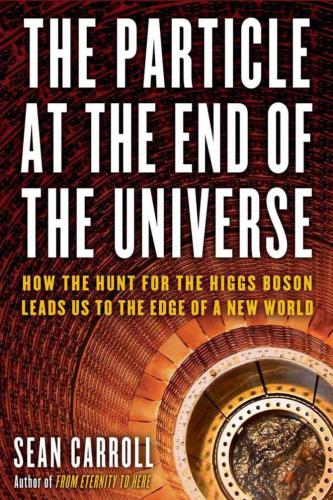
The Particle at the End of the Universe
How the Hunt for the Higgs Boson Leads Us to the Edge of a New World
کتاب های مرتبط
- اطلاعات
- نقد و بررسی
- دیدگاه کاربران
نقد و بررسی

September 24, 2012
With his trademark wit and lucidity, Carroll (From Eternity to Here) delivers the story of the search for the elusive Higgs boson—the Holy Grail of particle physics—which was finally discovered earlier in 2012. The tale, says Carroll, a theoretical physicist at the California Institute of Technology, is one of “money, politics, and jealousy” among scientists and nations seeking the prize. The Higgs boson is not an atomic particle; it’s part of the Higgs field that pervades the universe and gives atomic particles their mass. The quest for the elusive particle required a cutting-edge tool: the massive, complex Large Hadron Collider (LHC) in Switzerland. Carroll takes readers inside the collider’s 17-mile ring, where protons zoom around at ultrahigh speeds to smash together, revealing telltale signs of the boson. Along the way Carroll introduces researchers like Mike Lamont, the LHC’s “Mister Scott”; engineer Lyn Evans, the man who built the LHC; and Fabiola Gianotti, one of the top women scientists in the world. Whether explaining complex physics like field theory and symmetry or the workings of particle accelerators, Carroll’s clarity and unbridled enthusiasm reveal the pure excitement of discovery as much as they illuminate the facts. Illus.

October 1, 2012
A leading particle physicist explains why the official confirmation of the existence of the elusive Higgs Boson ("the God Particle") was a world-changing scientific milestone. Carroll (Theoretical Physics/Caltech; From Eternity to Here: The Quest for the Ultimate Theory of Time, 2010, etc.) makes a convincing case for the necessity of supporting basic scientific research that may have no discernible payback. At the cost of billions of dollars and a decades-long international effort by thousands of scientists, the Large Hadron Collider at CERN in Geneva is Big Science on steroids. The LHC uses superconducting magnets to accelerate protons traveling in opposite directions, almost to the speed of light. The massive amount of energy released when they collide results in the creation of the Higgs particle, which then rapidly decays, revealing the track of more recognizable particles. In the author's view, the days are over when an individual scientist such as Carl Anderson (working with a team of students) could build a cloud chamber and be the first to reveal evidence of antimatter by identifying the track of a positron. With the help of diagrams and vivid, descriptive language, Carroll reveals the scientific background to the discovery and why it has given scientists a glimpse of how the universe works on the most fundamental, subatomic level. The Higgs particle fills in a piece of the puzzle, but the author recognizes that despite the success of this endeavor, building an even larger, next-generation collider may prove politically difficult. A fascinating chronicle of an important chapter in fundamental science.
COPYRIGHT(2012) Kirkus Reviews, ALL RIGHTS RESERVED.

August 1, 2012
In July, science history was made when CERN, the multinational nuclear research center headquartered in Geneva, announced that physicists had discovered what looks to be the long-sought Higgs boson, which could answer major questions about the universe. Carroll, a theoretical physicist at the California Institute of Technology, had a book about the entire project slated for a January 2013 publication. No surprise that publication has been bumped up to November.
Copyright 2012 Library Journal, LLC Used with permission.

October 15, 2012
When the media announced in early July 2012 that researchers had finally confirmed the existence of the elusive Higgs boson, aka the God particle, physicists around the world hailed the discovery as a major scientific breakthrough. To California Institute of Technology researcher Carroll (From Eternity to Here, 2010), the event gave another opportunity to demonstrate what he does best, translating complicated ideas into lay-friendly language. In describing how the Higgs boson was detected after decades of theoretical speculation, Carroll covers a wide swath of science, from the Big Bang to quantum mechanics, as well as the thorny politics behind funding the Large Hadron Collider in Switzerland, where experiments established the particle's existence. Along with an overview of abstract concepts like supersymmetry, Carroll more lightheartedly explains why Hollywood loves science and why the world wasn't likely to end if the collider inadvertently created a mini-black-hole. A first-rate physics guide that enlarges our understanding of the universe we live in.(Reprinted with permission of Booklist, copyright 2012, American Library Association.)

























دیدگاه کاربران